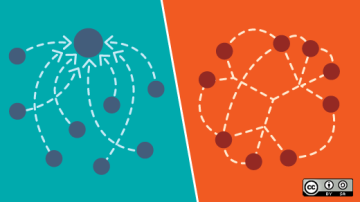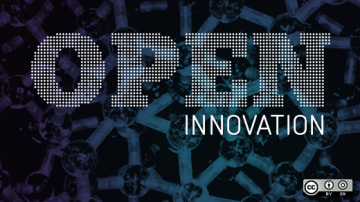
Luis Ibáñez works as Senior Software Engineer at Google Inc in Chicago. Opinions expressed in this site are his own.You can find him in github at: http://www.github.com/luisibanezand in twitter at: http://www.twitter.com/luisibanezHe previously worked as a Technical Leader at Kitware Inc., and Director of Open Source Community Development at the Open Source EHR Agent (OSEHRA). At Kitware he was closely involved in the development of open source software for medical imaging applications, in particular, working with the Insight Toolkit (ITK).Luis is a strong supporter of Open Access, and one of the editors of the Insight Journal, an OA Journal that enforces the verification of reproducibility. In collaboration with other instructors, Luis taught a course on Open Source Software Practices at RPI between 2007 and 2013, and also at the State University of New York at Albany between 2011 and 2014.Luis Ibáñez received a B.S. in Physics from the Universidad Industrial de Santander (Bucaramanga, Colombia) in 1989 and a M.S. in Optics from the same university in 1994. He received a D.E.A and Ph.D. degrees from the Universite de Rennes I (Rennes, France) in 1995 and 2000, respectively. In 1999, Luis Ibáñez joined the Division of Neurosurgery of the University of North Carolina at Chapel Hill and participated as a member of the MIDAG and CADDLab groups. His work at UNC was related to the development of algorithms for 2 and 3D registration applied to image guided surgery. He also participated as developer of the INSIGHT Registration and Segmentation Toolkit sponsored by the National Library of Medicine. Luis Ibáñez joined Kitware, Inc. in February 2002 where he was one of the main developers of the Insight Toolkit (ITK) coordinating its maintenance with other developers and the user community; he is also one of the main developers of the Image Guided Surgery Toolkit (IGSTK) and participated in crafting the operational principles of the Insight Journal. Luis Ibáñez is a strong supporter of Open Access, and the verification of reproducibility in scientific publications and is a regular speaker in ITK training courses, and in events disseminating the principles of Open Source. In August 2014, Luis joined Google Inc as Software Engineer, to work with the corporate engineering team in New York city.







Authored Comments
Thanks for pointing out the similarity with Scratch.
This is indeed no accident.
The Visual Programming Paradigm [https://en.wikipedia.org/wiki/Visual_programming_language] has been around for several decades. We had visual programming in computer graphics systems since the mid 1980's. For example PICT and PROGRAPH in 1985, and BLOX in 1986. We also saw it in data processing and electronics with LabVIEW since the early 1980's.
In the early 1990's, we had IDL running in VAX and Sun Sparc workstations, and Open Inventor running in Silicon Graphics machines; as well as OpenDX by IBM for data analysis.
In the mid 1990's we had SIMULINK (Matlab) for data processing. In education, Alice and Etoys were providing visual block programming in the late 1990's.
By the early 2000's we also had visual block programming on the NXT LEGO Mindstorms for robotics, and in Blender for computer graphics.
Sprites characters for animation were already in use to the Vic 20 and Commodore 64 in the early 1980's. Controlling the movement of characters date back to Turtle Graphics and the Logo programming language in the late 1960's.
...and so it goes...
The similarity of appearance between multiple visual programming interfaces today is the natural outcome of what we have collectively learned that works well, from over 40 years of exploration in that space.
A full chain of attribution probably should go back to the "Mother of All Demos" in 1968 by Douglas Engelbart. [https://en.wikipedia.org/wiki/The_Mother_of_All_Demos]
This exercise reinforces a tenet of open source thinking:
"We build upon what has come before us."
Which is masterfully presented in the video series:
"Everything is a Remix"
http://everythingisaremix.info/watch-the-series/
This is probably the reason why Benjamin Franklin and Thomas Jefferson were keen on letting ideas flow unrestricted by ownership, so that they could evolve, mature and bear fruits to benefit everyone.
Bob,
Very good question. The answer is no, the $35 price only includes the board itself. We typically would have to include
1) SD card for $10 to $14 - you could use an SD card from a camera
2) Monitor (you could connect to any monitor or TV that has an HDMI input)
3) Keyboard $10-$20
4) USB power supply with microUSB connector - commonly used for phones ~ $8
5) Wifi dongle $12
The designers of the Raspberry Pi aimed to make possible for us to reuse many of this components from other devices. (just like in the times of the Commodore 64 in the 1980's). E.g use the power supply of your phone, use your home TV as monitor, borrow a keyboard and mouse from a desktop... and so on.
A good alternative, is to look at the beginner's kits, for example this one at AdaFruit:
https://www.adafruit.com/products/2125
where all the pieces come conveniently together for about $100,
that is a pretty good deal in my humble opinion.
(note that you would still need to get a monitor, or any TV with an HDMI input).